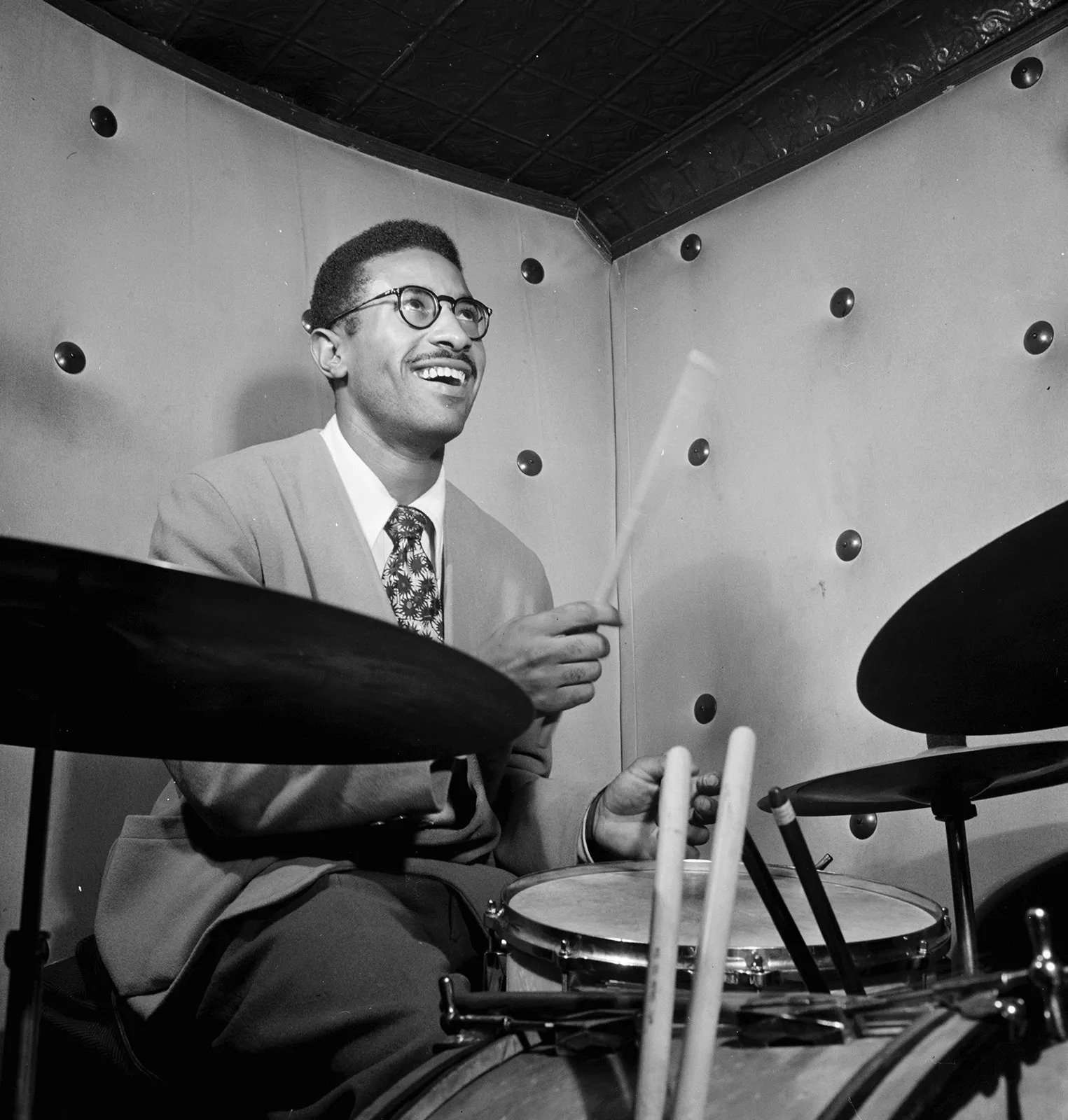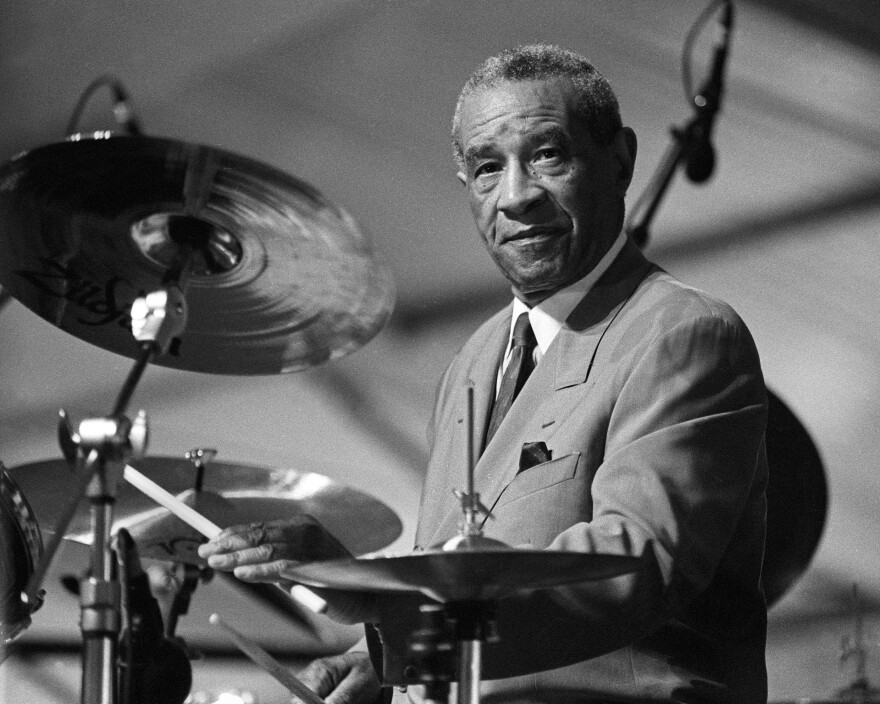Max Roach – A Complete Biography
Introduction
Maxwell Lemuel “Max” Roach (January 10, 1924 – August 16, 2007) was an American jazz drummer, composer, bandleader, and educator whose innovations helped define modern jazz drumming. Rising to prominence during the bebop revolution of the 1940s, Roach expanded the role of the drummer from timekeeper to melodic and interactive soloist. Over a career spanning six decades, he led influential groups, collaborated with many of jazz’s leading figures, produced politically charged suites, and taught at the university level.

Childhood
Max Roach was born on January 10, 1924, in Newland, North Carolina. When he was a small child his family moved to Brooklyn, New York, where the city’s vibrant musical life—big bands, church choirs, and neighborhood musicians—shaped his earliest impressions. Roach showed a natural gift for rhythm and received his first drum kit while still in school. He studied percussion seriously as a teenager and later attended the Manhattan School of Music, where he developed both classical and jazz techniques that would become essential to his career.
Youth
By his late teens, Roach was already playing with established jazz musicians. In the early 1940s, he performed with several big-name bands that bridged swing and the emerging modern style. His major breakthrough came in the mid-1940s when he became a key figure in the bebop movement. Working with trailblazers like Dizzy Gillespie and Charlie Parker, Roach developed a new approach to drumming. Instead of simply keeping time, he used the ride cymbal as the primary timekeeper and added accents on the snare and toms to create a conversational, melodic role for the drums. This innovation helped redefine small jazz ensemble interplay.
Adulthood
As an adult, Roach became one of the most respected and versatile musicians of his generation. In the early 1950s, he co-led ensembles and then formed the celebrated Max Roach–Clifford Brown Quintet with trumpeter Clifford Brown and saxophonist Sonny Rollins. The group produced influential recordings that blended technical mastery with deep emotion. After Brown’s tragic death in 1956, Roach continued to lead bands, record prolifically, and push creative boundaries.
In the 1960s, Roach began to use his music to address social and political issues. His 1960 album We Insist! Freedom Now Suite, featuring vocalist Abbey Lincoln, was a bold statement on civil rights and racial justice. Beyond this, he experimented with unconventional time signatures, larger ensembles, and collaborations with avant-garde musicians. Later in his career, he also performed with orchestras, composed extended works for percussion, and served as a respected educator at the University of Massachusetts. Roach’s commitment to innovation and expression never waned, and he continued performing well into his later years.
Major Compositions and Recordings
Roach’s discography is vast and influential, spanning traditional jazz, bebop, avant-garde, and politically inspired works. His recordings with Charlie Parker and Dizzy Gillespie in the 1940s remain landmarks of bebop. The Max Roach–Clifford Brown Quintet albums of the 1950s set new standards for small-group jazz.
Among his most notable works are Jazz in ¾ Time, which explored jazz in waltz meter; We Insist! Freedom Now Suite, one of the most significant political statements in jazz history; Percussion Bitter Sweet, which combined jazz with African-inspired rhythms; and Drums Unlimited, which featured innovative unaccompanied drum solos such as “The Drum Also Waltzes.” These recordings highlighted his ability to push the boundaries of rhythm, form, and expression in jazz.
Death
Max Roach passed away on August 16, 2007, in Manhattan, New York, at the age of 83. In his final years he faced health challenges, including complications from dementia and Alzheimer’s disease. His death was met with widespread tributes from the jazz community and beyond. Musicians, critics, and fans celebrated his unparalleled contributions to music, not only as a technical innovator but also as a courageous artist who aligned his art with social justice. Memorial services and tributes reaffirmed his status as one of the most important figures in modern jazz.
Conclusion
Max Roach left a towering legacy in jazz and beyond. He redefined the role of the drummer, turning percussion into a melodic, expressive voice. His compositions combined musical daring with social consciousness, and his teaching inspired new generations of musicians. From his early days in Brooklyn to international recognition, Roach embodied the restless creativity and courage of jazz itself. His influence lives on in the rhythms, innovations, and spirit of countless musicians who followed in his path.

Comments are closed